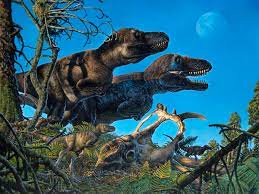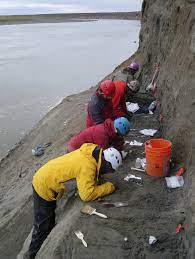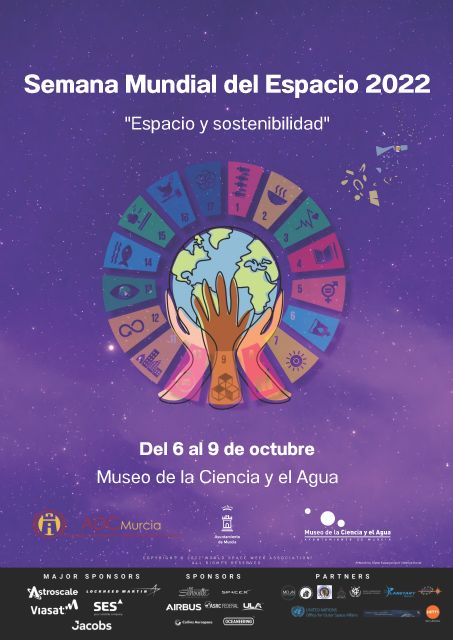Dinosaurs are frequently portrayed as enormous monsters wandering through tropical timberlands or across hot deserts — and the sticky wilderness of Jurassic Park may have gone far to set those pictures.
However, an investigation out today in the diary Current Biology negates those thoughts. It recommends that these animals additionally lived all year in what’s presently northern Alaska, where they suffered freezing winters, snow, and long periods of obscurity.
“Essentially, these creatures were inhabiting an outrageous we didn’t imagine that they could live at,” Gregory Erickson, a natural science teacher at Florida State University and co-creator of the examination, reveals to NPR’s All Things Considered.
A vital piece of proof behind his exploration group’s case is another assortment of bones and teeth from baby dinosaurs tracing back to more than 70 million years prior.
Researchers started to uncover dinosaur fossils in the polar areas of the planet during the 1950s. Those discoveries brought up the issue of whether dinosaurs lived in the Arctic and Antarctic all year or on the off chance that they meandered there occasionally looking for food. However, stores of child’s teeth and juvenile bones highlight a more perpetual home.
“That is to say, honestly, we were shocked when we tracked down this load of various sorts of dinosaurs, it’s anything but an ancient maternity ward up there,” Erickson says.
Erickson, alongside individual scientists Patrick Druckenmiller, Donald Brinkman, Caleb Brown, and Jaelyn Eberle, voyaged four days via vehicle, plane, and boat to get to northern Alaska, close to the Arctic coast. And, after it’s all said and done, a portion of the removal locales was just available by rappelling off a precipice. They made this journey each August for 10 years to gather proof for their examination.
In the wake of scratching through the silt on the banks of the Colville River utilizing dental instruments, specialists discovered the remaining parts of seven distinct species, including child Tyrannosaurs, duck-charged dinosaurs like hadrosaurids, and Triceratops family members.
Given the long hatching seasons of dinosaur eggs — three to a half years for a portion of the animal types they recognized — the researchers say these dinosaurs probably been all-year inhabitants.
“There truly wasn’t sufficient opportunity to both lay the eggs, brood, bring forth and afterward make that occasional relocation [to a hotter location],” says Michael D’Emic, a partner teacher of science at Adelphi University.
D’Emic wasn’t essential for the investigation, however as an individual dinosaur specialist, he says what dazzled him about Erickson’s gathering was simply the find, yet how drawn-out the whole cycle was — from making a trip to the Arctic Coast for a short window of unearthing to gathering more than a huge load of silt.
The gathering brought back their discoveries and, in an exertion much the same as gold panning, washed the soil off and filtered through little shakes to choose minuscule bones and teeth pieces.
“They found more than 100 bones and teeth that could fit on the top of a pin,” D’Emic says. “And afterward they difficultly look over it under the magnifying instrument for many hours, if not thousands.”
D’Emic says the work likewise upholds the possibility that a few dinosaurs could manage their internal heat level, actually like warm-blooded creatures.
“I wouldn’t venture to such an extreme as to say all [dinosaurs were warm-blooded],” he says, “however I would say it’s protected to say that most of the dinosaur bunches were more warm-blooded than cold.”
Yet, that leaves more inquiries for the scientists. Erickson expects that a portion of these dinosaurs may have likewise slept underground.
“I can’t envision any of these little creatures bearing the cold on the off chance that they didn’t burrow tunnels and something like that,” Erickson says. “However, shouldn’t something be said about the goliath ones? What might be said about the monster tyrannosaur we have up there? What’s going on with them?”
This examination may not address that inquiry, yet Erickson says it demonstrates you can get familiar with a ton about the greatest creatures at any point to walk the planet just by looking under a magnifying lens.
Karen Zamora and Christopher Intagliata delivered and altered the sound. Karen Zamora adjusted it for the web.






